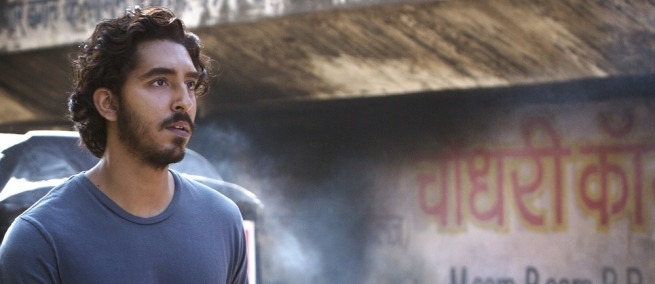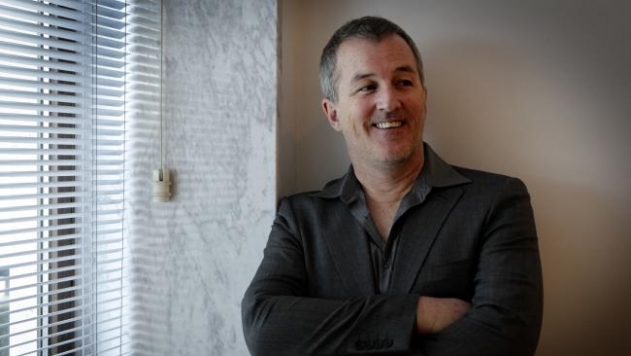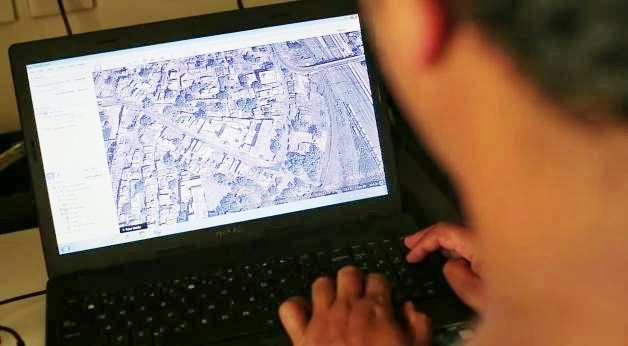
Garth Davis’s new dramatic film LION is about a five-year-old boy, Saroo, lost in Calcutta, India, with only a few memories of the town he came from. Once he is old enough, Saroo uses Google Earth as a tool to pinpoint his memories to a physical location. The film is based on a memoir by Saroo Brierley. LION had its U.S. premiere at the Hamptons International Film Festival, and stars Dev Patel and Nicole Kidman. It is written by Australian writer Luke Davies. Science & Film spoke with Davies at the Festival about the storytelling challenges of integrating technology in a visually compelling way.
Science & Film: How does LION depict technology?
Luke Davies: Depicting screens on screen is an eternal challenge. With this story in particular, technology was essential and so we had to make it exciting, gripping, and above all, not boring. Broadly speaking, me and Garth, the director, think that the technological stuff is merely a bridge to the emotional heart of the story. We’re really proud of LION; it is an extremely moving story and everybody cries. What the real-life character did with Google Earth was amazing.
In the film, there is all this beautiful aerial photography. These gliding aerials are part of the character’s imagination and memory. We chose to show what he is doing technically with the Google search and then we cut to the aerials which is the bridge into his emotional interior–the hope and the frustration he feels.
The final version of the film has about two or three minutes which were cut to get it down to exactly two hours. This was about when he first discovers Google Earth and he tries to work out how to zoom. There is that little mini learning curve with Google Earth. I miss that. I thought they could have still had that on screen.

S&F: Did you choose to depict the Google Earth interface from the time when the story actually took place?
LD: In 2016, Google Earth has almost the whole earth covered. There used to be areas where it got pretty pixilated once you got down to a certain level and you lost resolution. The producers wanted to keep their distance from Google in the sense that they didn’t want LION to feel in any way like some kind of promotional thing for Google, although Google is extremely happy that this film exists. What Google did help with was making accessible for the filmmakers the archival images of what Google looked like at that exact time–what the interface looked like. All those parts of the film are completely realistic for the period when the film takes place, beginning in 2008.
S&F: What is the time period in which the film takes place?
LD: In our film there is a kind of compression going on of the real story. The real story is that he searched every night after work all night long obsessively for three years. Wait a minute, how much of the story do you know?

S&F: Spoilers to come.
LD: Here is some background information. Saroo accidently gets on a train and falls asleep on an empty carriage waiting for his brother who he thinks will come and find him. He’s not really thinking straight because he’s only five years old. What he doesn’t know is that the train is a decommissioned train about to be taken 2,000 kilometers to Calcutta and that the doors will be locked, and that he’s in the final carriage which will never even reach a platform. He is trapped on the train for almost two days because no one can see him and even when he waves his hand out the window, his carriage is way off the end of the platform. Then, he ends up in Calcutta and all these dramatic events happen to him. Eventually, he ends up in an orphanage and gets adopted by Sue Brierley (Nicole Kidman) and winds up in Australia. So, when the Google search begins he does the only thing he knows how to do. He has only a few visual memories from when he was five years old: the angle of the platform, the dam where he and his brother used to play, the underpass. All he knows to do is to go back on Google to Calcutta’s main train station, Howrah, where it all began, where he became a street kid in the tunnels of Howrah station, and begin following the railway lines out of there. It is a massive station, there are like 20 platforms. So there are already 20 lines going out, almost immediately they branch, and India is the country that is the most dense with railway lines in the world. Its rail system goes back to the British Raj days. After fiddling about a bit on the computer he knows the task is very immense, pretty much a needle in a haystack, and that he has to be really methodical. He creates search radiuses and he works out where possibly he might come from.
If you’ve ever used Google Earth, if you try and follow a road or a railway line and you go too high, you can travel pretty quickly on Google Earth, you can zoom along, but you won’t see the detail you want to see. So, for instance, the little symbol for a railway station that you need to see has to be visible. And yet, if you are down low enough to see that you are actually travelling really slowly. So, that’s why it took him three years.

S&F: Is it a task he could ever have undertaken without the technology?
LD: Absolutely not. I wouldn’t normally tell spoilers, but he had the name in his head of the village where he came from. When he five years old and was lost in Calcutta, nobody had a clue what this town was that he was talking about. One of the beautiful release moments at the end of the film, we think, is when he sees the name of his town come up on a Google Earth screen and he’s like, oh my god, that’s how you spell it. He always said his hometown was “Ganeslai,” and the name of the town is actually two words, Ganesh Talai.
In real life, one day he finally finds a place on Google Earth and says, this fits my mental geography. But, the town is called Khandwa and he says, my town is called Ganeslai. So, he searches around about Khandwa and he finds a Facebook page of “I Grew Up in Khandwa.” It is a page with 400 members and he posts on it and says, can anyone tell me, was there a fountain opposite the train station, and was it next to a cinema? Then, the next morning he wakes up and someone has said, yeah the fountain is empty now and the cinema is closed down but yes, that’s correct. And he replies, is there any place on the north-west side of that town that is called something like Ganeslai? And he wakes up the next morning and there is a two-word answer: Ganesh Talai. That moment is huge. Our film has him seeing Ganesh Talai on Google Earth. What we get is to have Dev actually say Ganesh Talai, and put it together. It is an equally beautiful moment.
S&F: I saw PERSONAL SHOPPER, the Olivier Assayas film which had its U.S. premiere at the New York Film Festival, and the issue of presenting screens on screen is manifest in that film as well. I heard Assayas describe the main character as having an existential crisis on the movie screen with her phone–on screen she types into her phone and that becomes an entryway into her psychology.
LD: Do they show screens or do they have the text floating out?
S&F: They show screens. It sounds like from what you’re saying, that LION shows screens but then you found a way to take it to a more visual, more abstract place.
LD: When we show screens it is not CGI or post-production; we are actually shooting the stuff that Google made possible. Then, it’s chopped up in the edit, but there is no real trickery–I have noticed lately a trend happening in films where people type and you see the text artificially comes out of the device and float.
S&F: That seems so unnecessary. We’re all used to looking at screens.
LD: I don’t think it is all that problematic to show them. They are such an integral part of the DNA of our world now. It is fascinating. Films show the history of the telephone through the twentieth century. In the 1950s producers weren’t saying, telephones, how do we avoid them? You don’t have to avoid the technology because it is part of our lives.
S&F: But in terms of showing a character having an emotional experience, phones are still maybe easier because the character has to vocalize something whereas with screens all you see is a motor action and it’s hard to read tone.
LD: That problem doesn’t really arise for us in the way it may be happening in PERSONAL SHOPPER because we have already set up the character’s emotional need.
S&F: Would you say he is using technology as a tool?
LD: Yes. He is not communicating with anyone. We, the audience, are with him on his task. Once or twice you see him see a station, zoom in, see something, and move on. So, you get a sense of what he’s doing but we didn’t need to overwork it once the audience figures out what he is searching for. We feel excited because the film is a joyful way of saying, holy shit, the modern world! This could never have happened to him before. On the other hand, we don’t feel that we have too much technology–we feel that the story is free to follow the journey of his heart which is really what it’s about. We are excited because we think we have cracked the code to get just the right balance.
The beautiful thing about film is that you get to try and make such journeys heroic. Whereas, what was actually happening for him wasn’t heroic, it was completely obsessive–three years of a girlfriend going, we’re going to split up if you keep this shit up, but sort of being supportive.

S&F: That sort of methodical investigation sounds like something a scientist might undertake.
LD: It was super methodical. In making this film we had to ask, how do we make you, the audience, feel the story in your gut and heart and how do we avoid feeling like we’re in an abstracted realm of the methodological? Ultimately, technology aside, it is the primal mythic fable: reunification with the lost mother. This story goes back, I think, to the earliest origins of an interior emotional life.
LION is director Garth Davis’ first feature film. It will be released into theaters by the Weinstein Company on November 25, 2016 which will qualify it for the Oscars. Science & Film has covered Dev Patel’s other starring role as the prodigious mathematician Srinivasa Ramanujan in THE MAN WHO KNEW INFINITY.